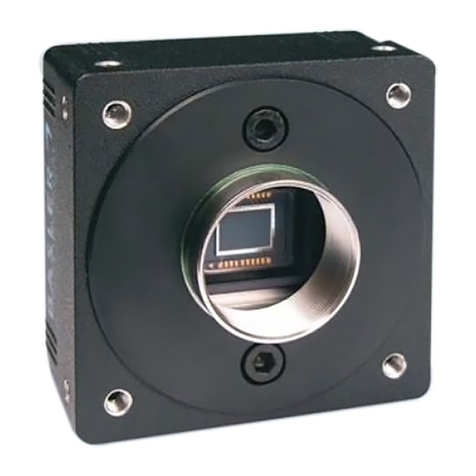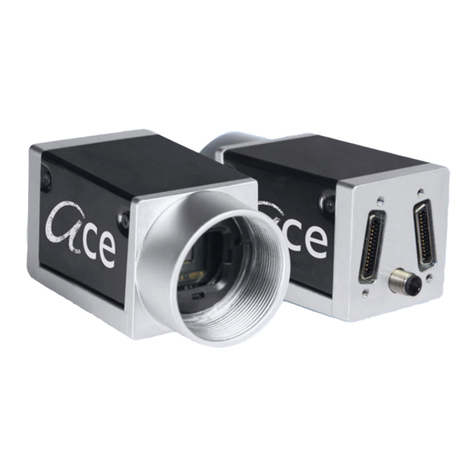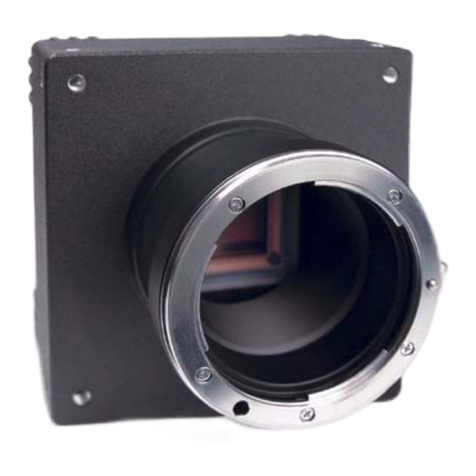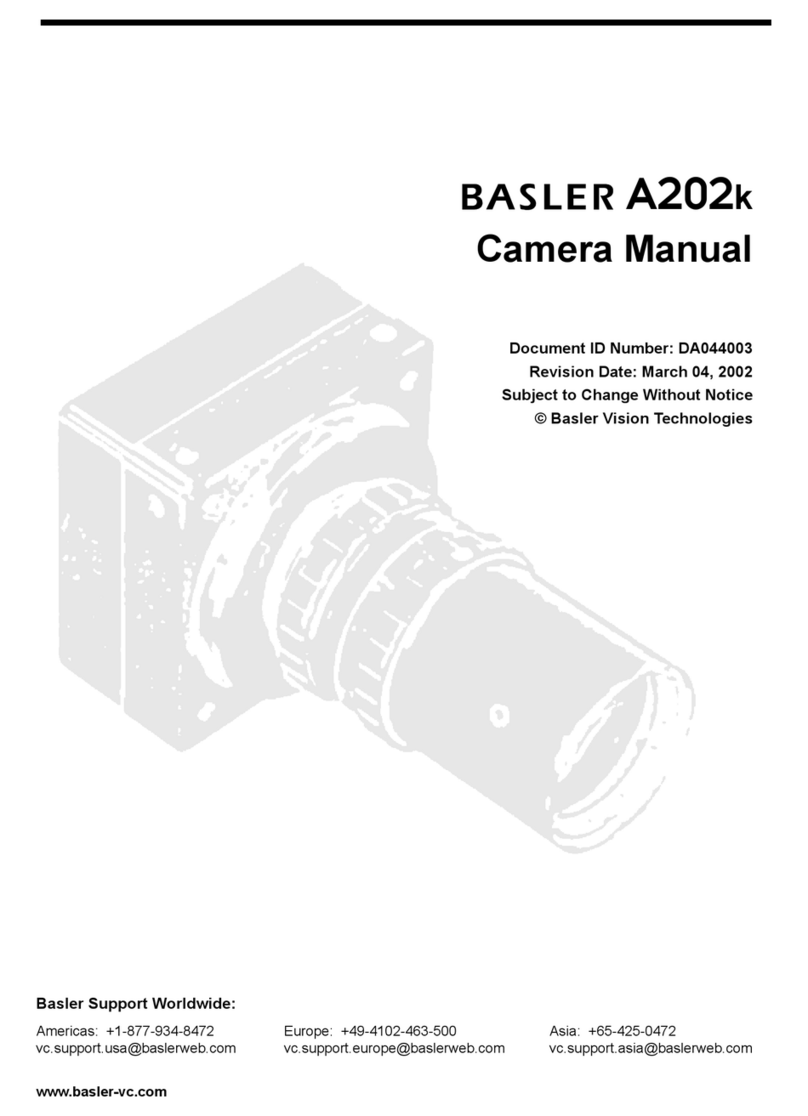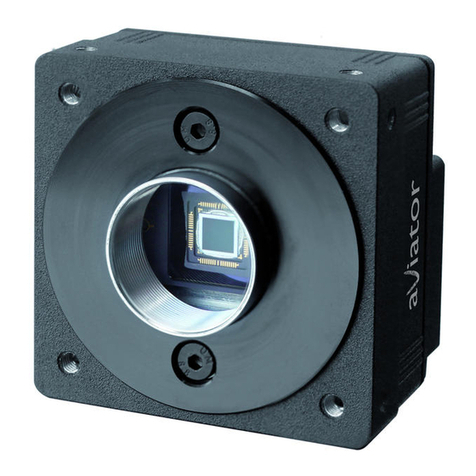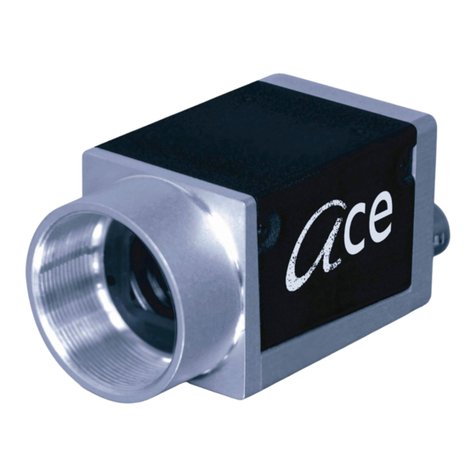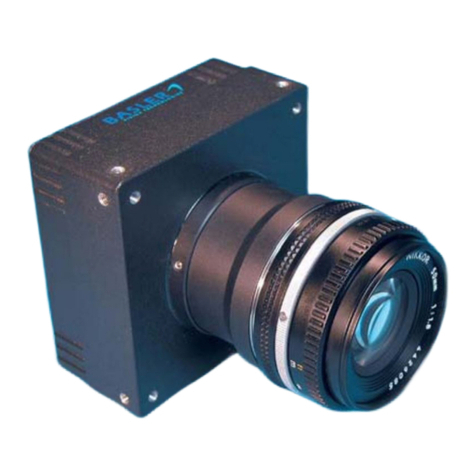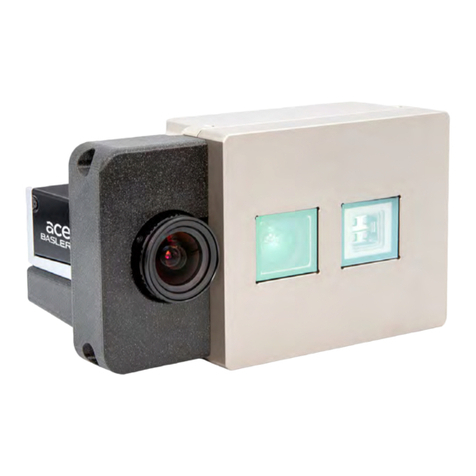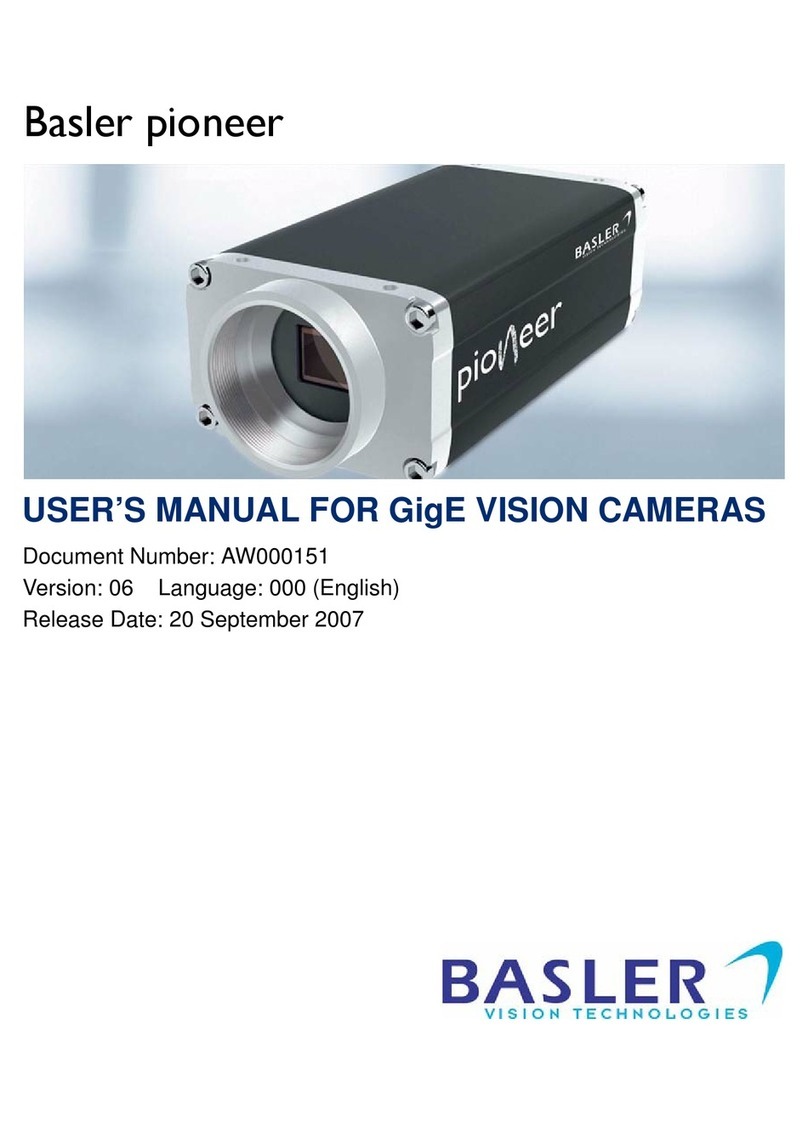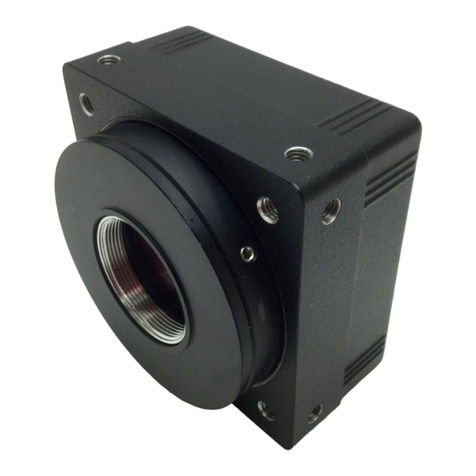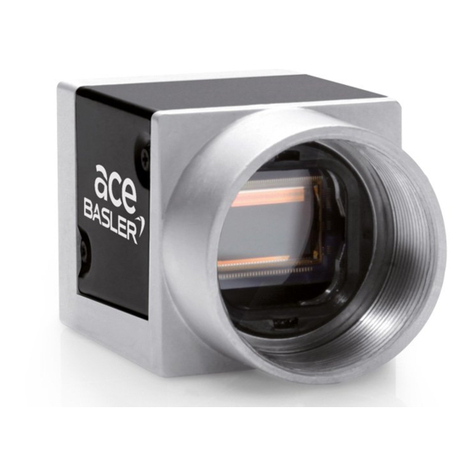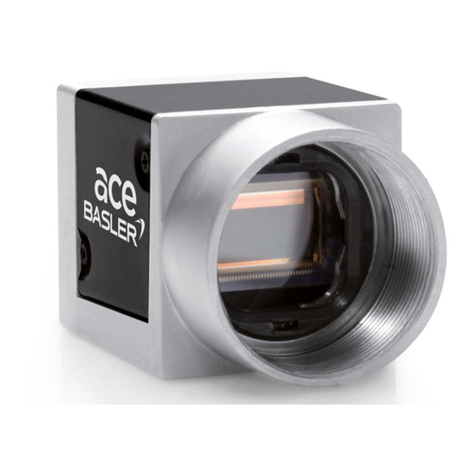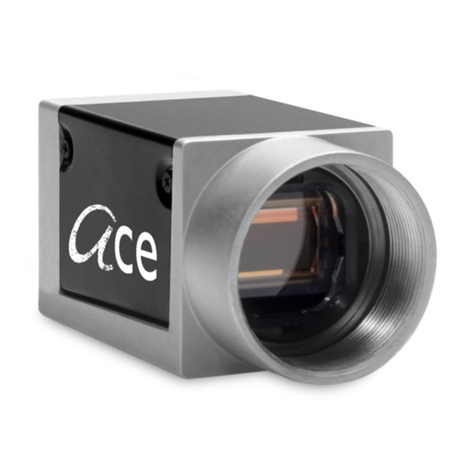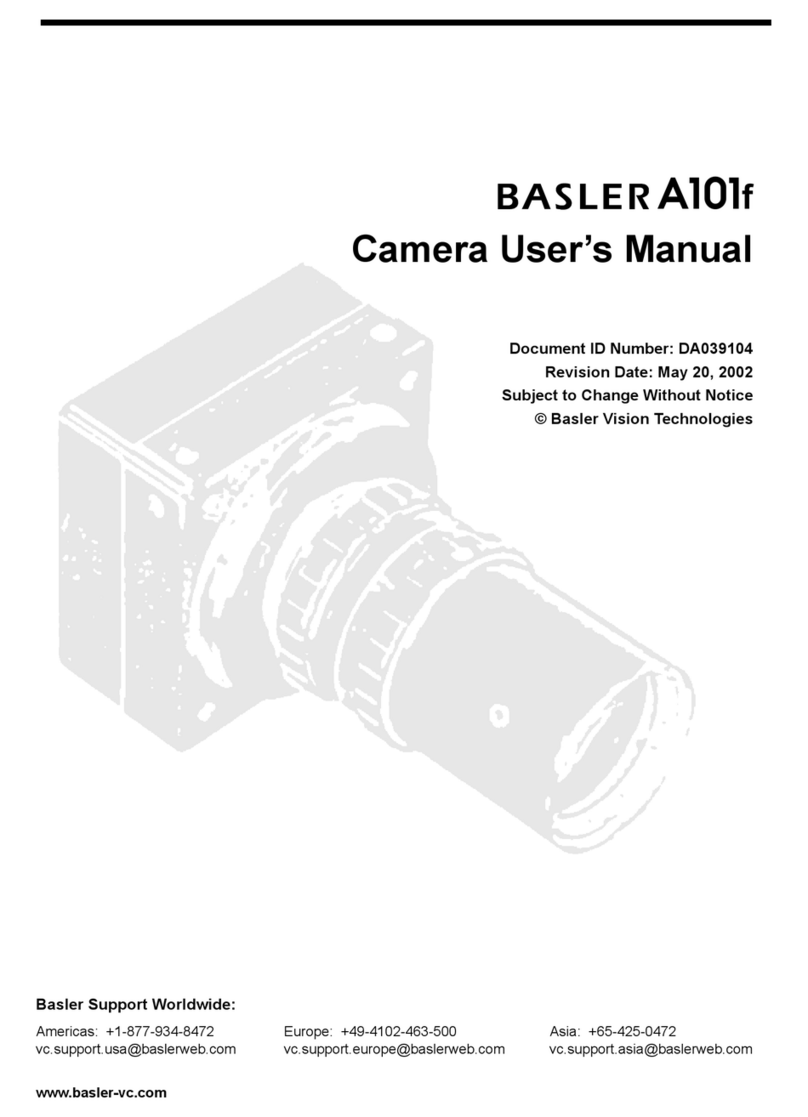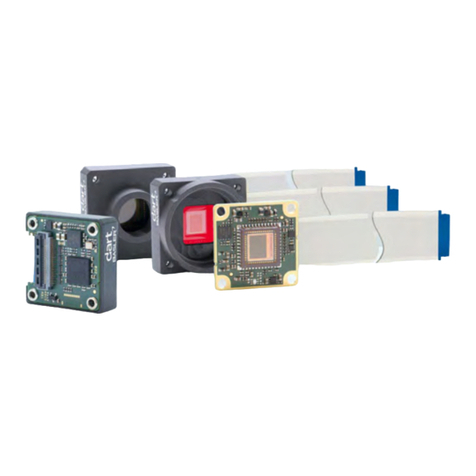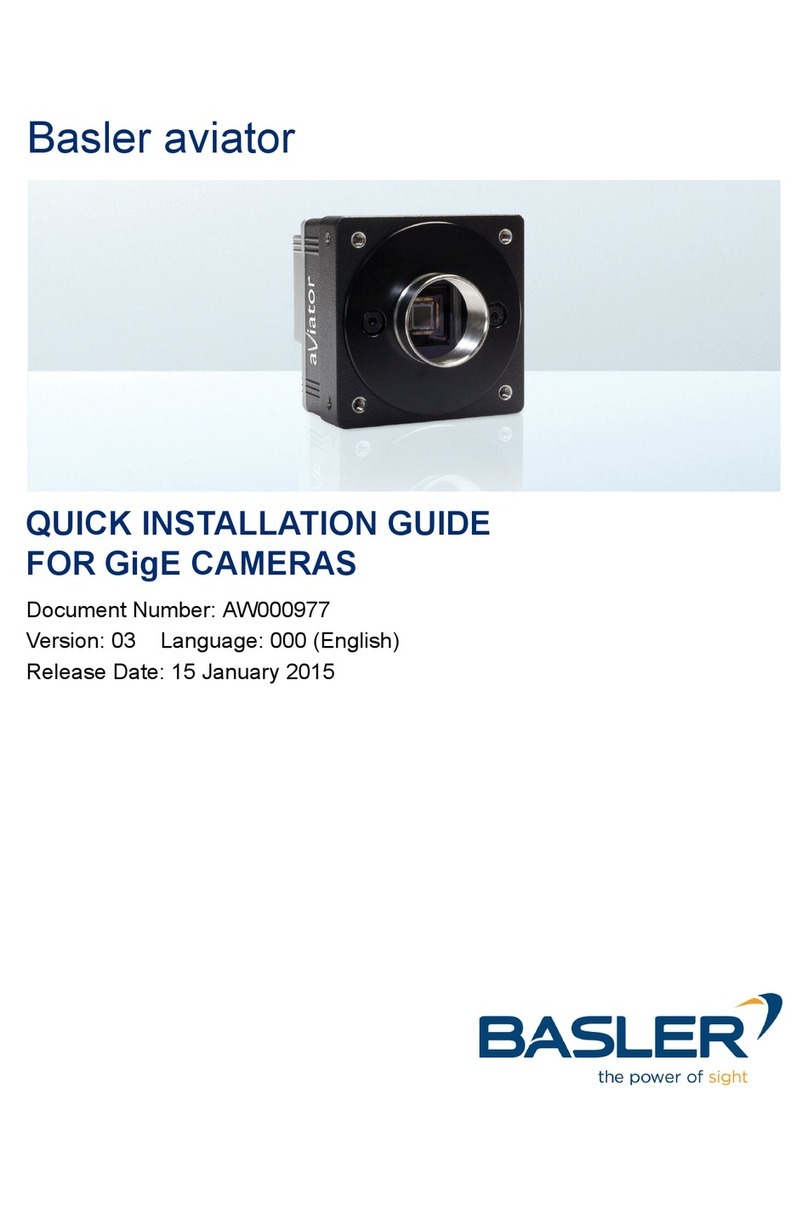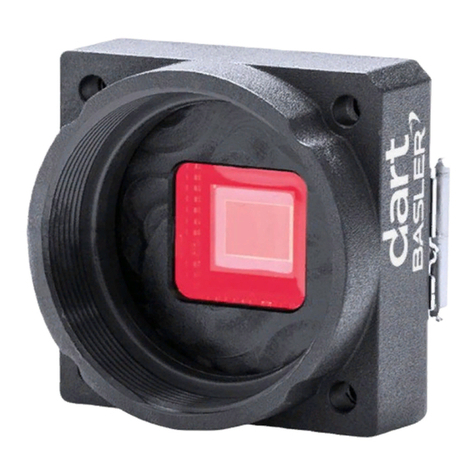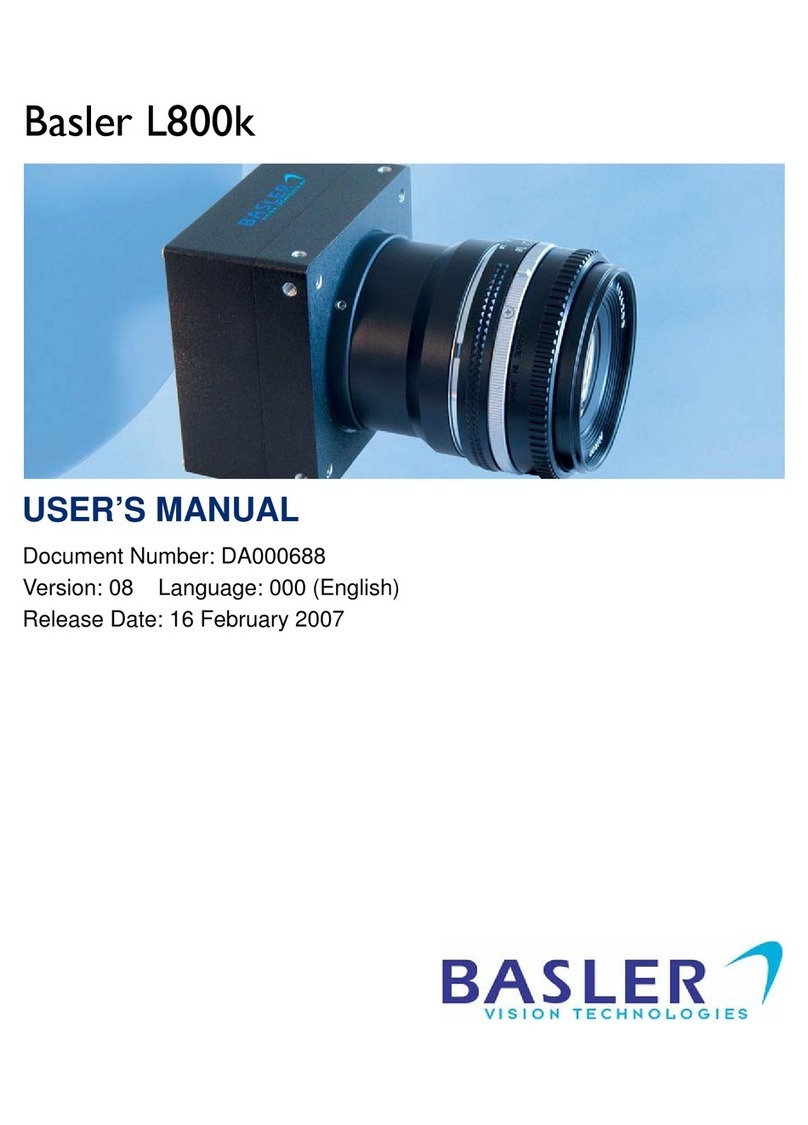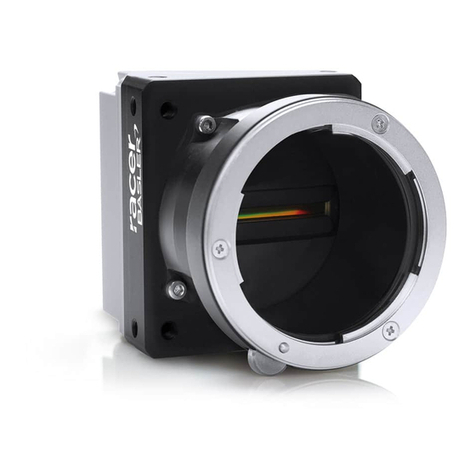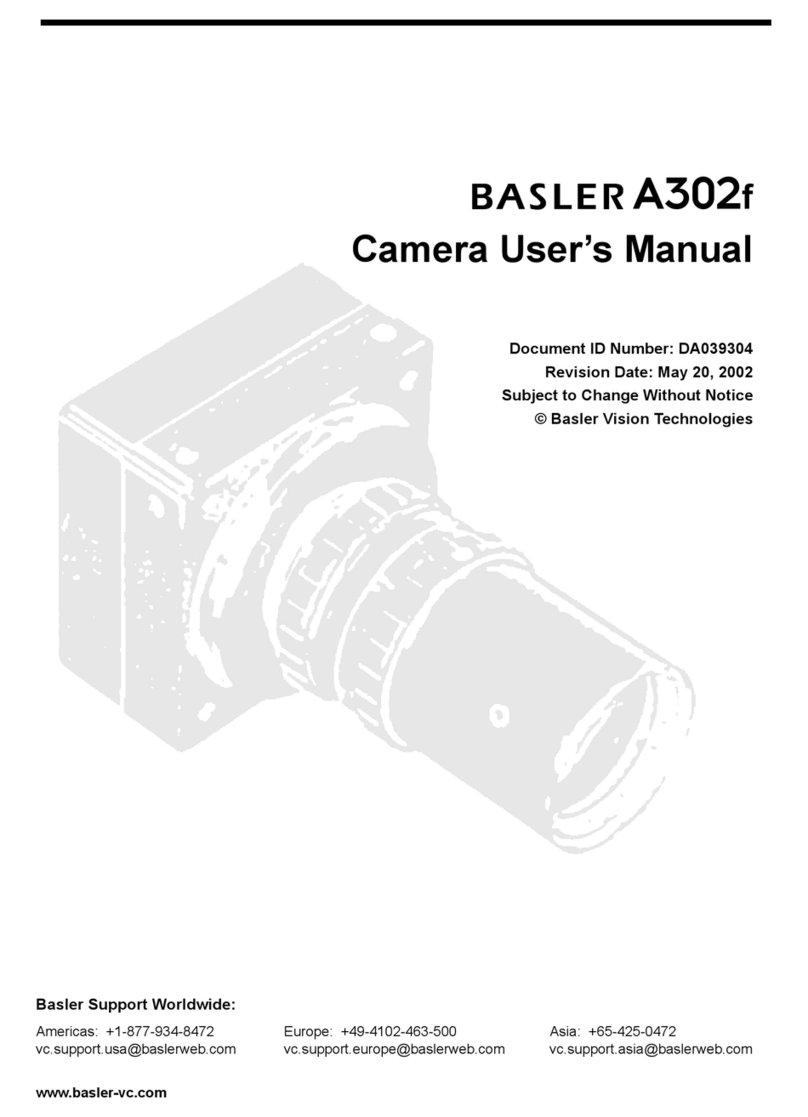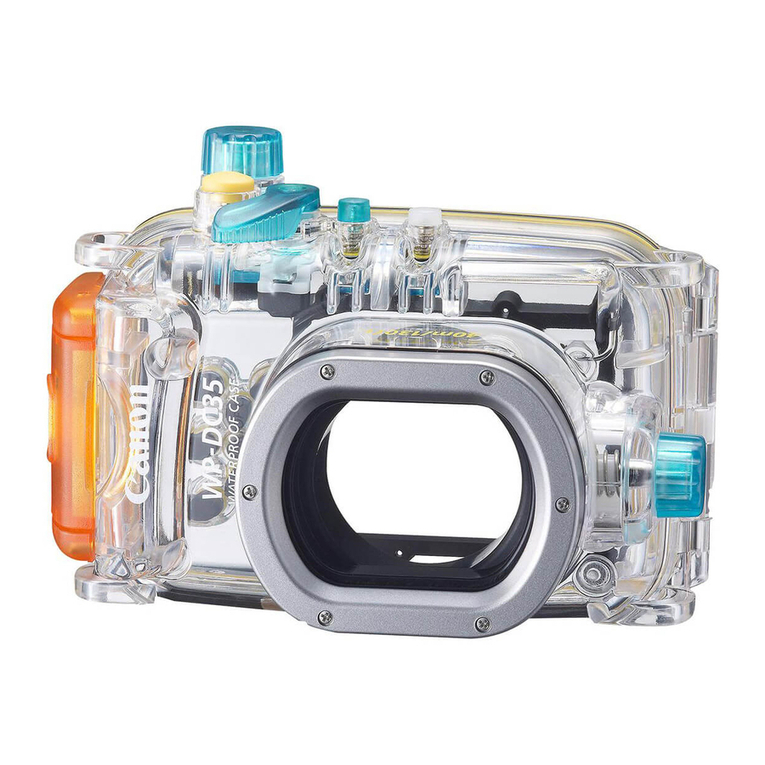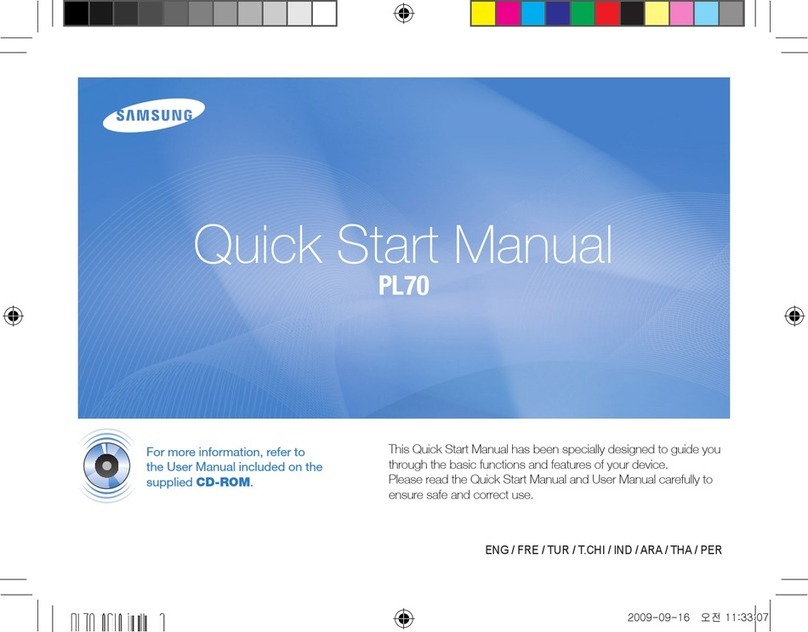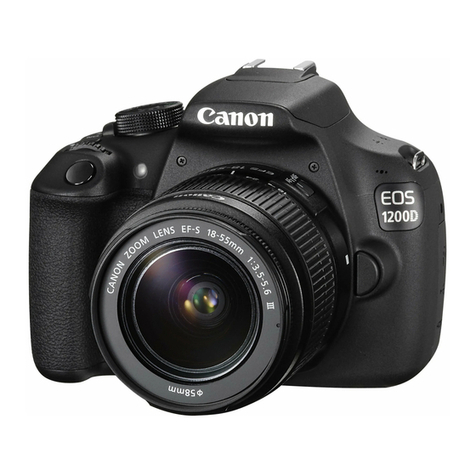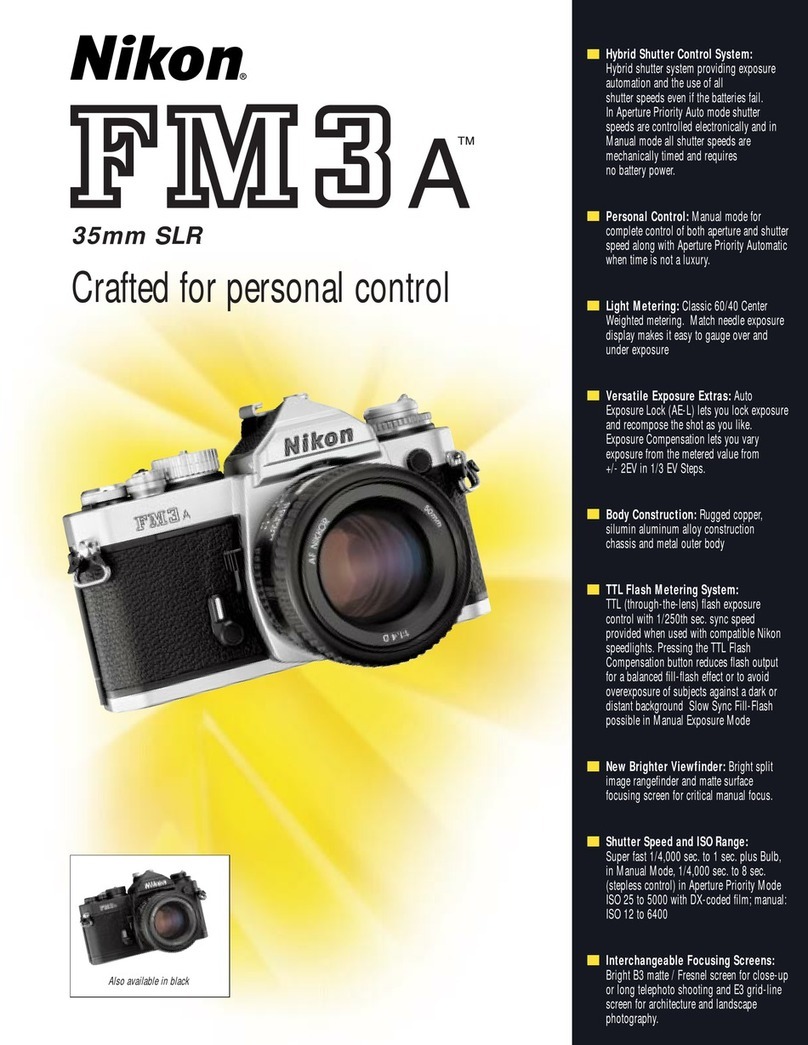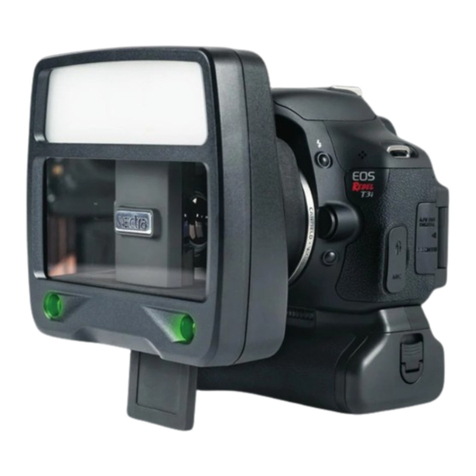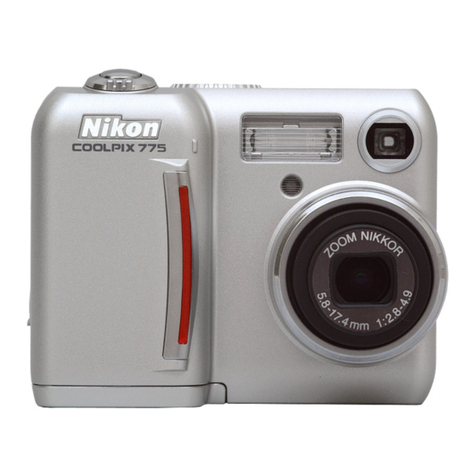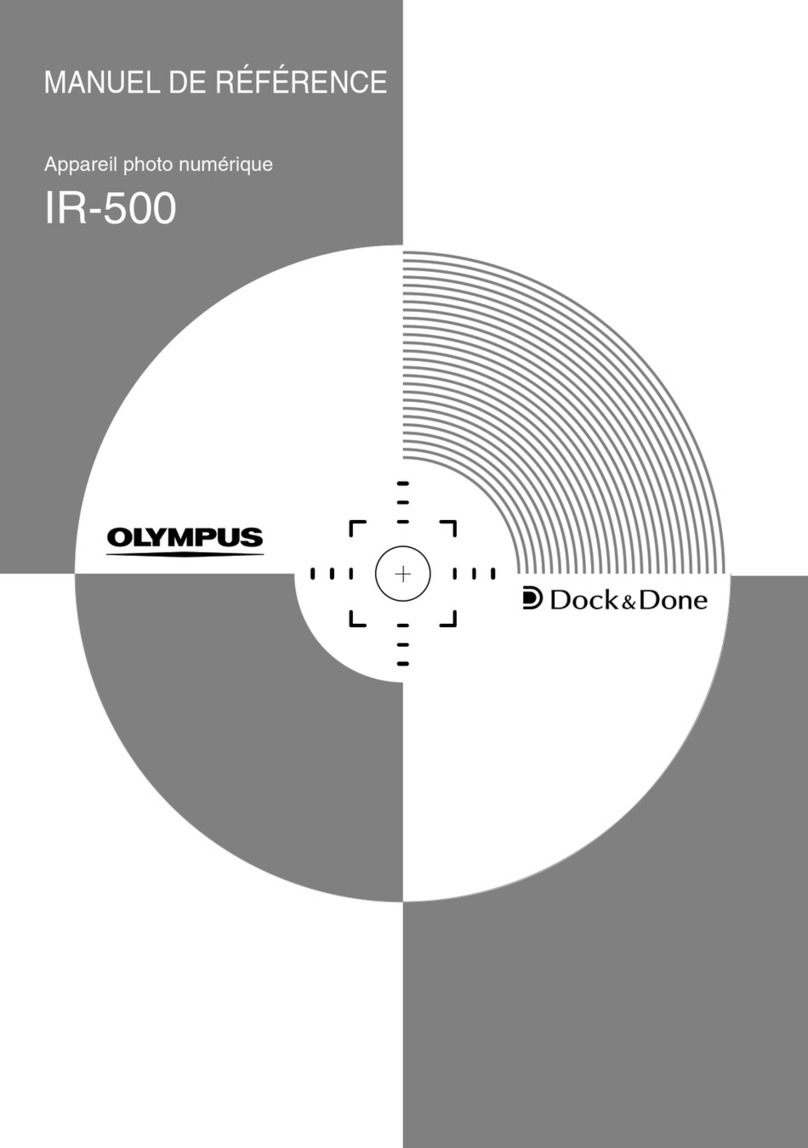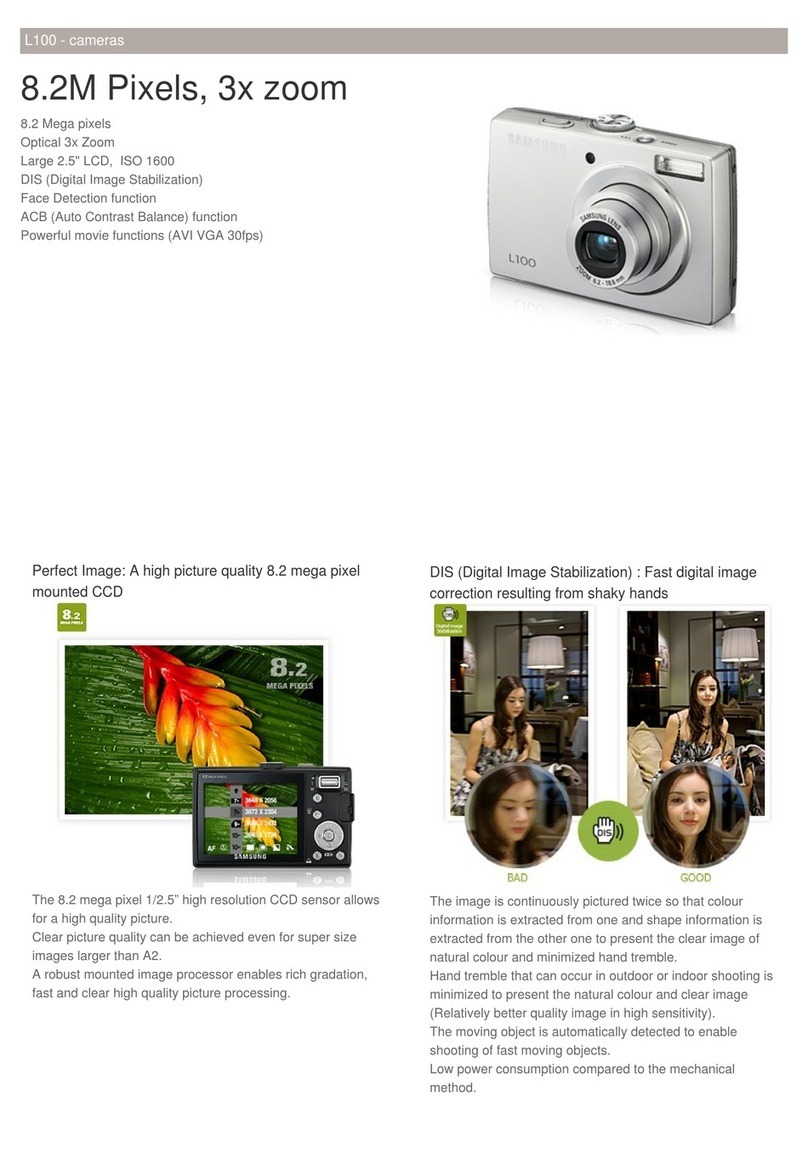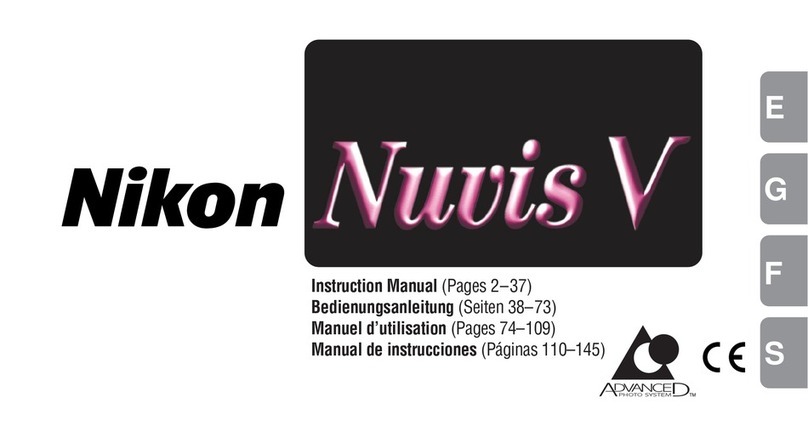
Contents
BASLER L100k Series III
DRAFT
4.2.3 Example Commands . . . . . . . . . . . . . . . . . . . . . . . . . . . . . . . . . . . . . . . . . . 4-9
4.2.3.1 Read Command. . . . . . . . . . . . . . . . . . . . . . . . . . . . . . . . . . . . . . . . 4-9
4.2.3.2 Write Command . . . . . . . . . . . . . . . . . . . . . . . . . . . . . . . . . . . . . . . . 4-9
4.2.3.3 Calculating the Block Check Character . . . . . . . . . . . . . . . . . . . . . 4-10
4.2.4 Commands for Setting Camera Parameters . . . . . . . . . . . . . . . . . . . . . . . . 4-11
4.2.4.1 Video Data Output Mode . . . . . . . . . . . . . . . . . . . . . . . . . . . . . . . . 4-11
4.2.4.2 Exposure Time Control Mode. . . . . . . . . . . . . . . . . . . . . . . . . . . . . 4-12
4.2.4.3 Timer 1. . . . . . . . . . . . . . . . . . . . . . . . . . . . . . . . . . . . . . . . . . . . . . 4-13
4.2.4.4 Timer 2. . . . . . . . . . . . . . . . . . . . . . . . . . . . . . . . . . . . . . . . . . . . . . 4-14
4.2.4.5 Digital Shift. . . . . . . . . . . . . . . . . . . . . . . . . . . . . . . . . . . . . . . . . . . 4-15
4.2.4.6 Area of Interest Starting Pixel. . . . . . . . . . . . . . . . . . . . . . . . . . . . . 4-16
4.2.4.7 Area of Interest Length in Pixels . . . . . . . . . . . . . . . . . . . . . . . . . . 4-17
4.2.4.8 Shading Correction . . . . . . . . . . . . . . . . . . . . . . . . . . . . . . . . . . . . 4-18
4.2.4.9 Shading Correction Data Transfer . . . . . . . . . . . . . . . . . . . . . . . . . 4-19
4.2.4.10 Shading Correction Data . . . . . . . . . . . . . . . . . . . . . . . . . . . . . . . 4-20
4.2.4.11 Odd Pixel Gain. . . . . . . . . . . . . . . . . . . . . . . . . . . . . . . . . . . . . . . 4-21
4.2.4.12 Odd Pixel Offset. . . . . . . . . . . . . . . . . . . . . . . . . . . . . . . . . . . . . . 4-21
4.2.4.13 Even Pixel Gain . . . . . . . . . . . . . . . . . . . . . . . . . . . . . . . . . . . . . . 4-22
4.2.4.14 Even Pixel Offset . . . . . . . . . . . . . . . . . . . . . . . . . . . . . . . . . . . . . 4-22
4.2.5 Test Image Command. . . . . . . . . . . . . . . . . . . . . . . . . . . . . . . . . . . . . . . . . 4-23
4.2.6 Camera Reset Command . . . . . . . . . . . . . . . . . . . . . . . . . . . . . . . . . . . . . . 4-23
4.2.7 Query Commands . . . . . . . . . . . . . . . . . . . . . . . . . . . . . . . . . . . . . . . . . . . . 4-24
4.2.7.1 Read Vendor Information. . . . . . . . . . . . . . . . . . . . . . . . . . . . . . . . 4-24
4.2.7.2 Read Model Information. . . . . . . . . . . . . . . . . . . . . . . . . . . . . . . . . 4-24
4.2.7.3 Read Product ID. . . . . . . . . . . . . . . . . . . . . . . . . . . . . . . . . . . . . . . 4-24
4.2.7.4 Read Serial Number. . . . . . . . . . . . . . . . . . . . . . . . . . . . . . . . . . . . 4-25
4.2.7.5 Read Camera Version . . . . . . . . . . . . . . . . . . . . . . . . . . . . . . . . . . 4-25
4.2.7.6 Read Reference Gain Values. . . . . . . . . . . . . . . . . . . . . . . . . . . . . 4-26
4.2.7.7 Read Microcontroller Firmware Version. . . . . . . . . . . . . . . . . . . . . 4-27
4.2.7.8 Read FPGA Firmware Version. . . . . . . . . . . . . . . . . . . . . . . . . . . . 4-27
4.2.7.9 Read Camera Temperature . . . . . . . . . . . . . . . . . . . . . . . . . . . . . . 4-28
4.2.8 Commands for Manipulating Configuration Sets. . . . . . . . . . . . . . . . . . . . . 4-29
4.2.8.1 Copy the Factory Set or the User Set into the Work Set . . . . . . . . 4-29
4.2.8.2 Copy the Work Set into a User Set . . . . . . . . . . . . . . . . . . . . . . . . 4-30
4.2.8.3 Select the Startup Pointer . . . . . . . . . . . . . . . . . . . . . . . . . . . . . . . 4-31
4.2.9 Camera Status Command. . . . . . . . . . . . . . . . . . . . . . . . . . . . . . . . . . . . . . 4-32
4.2.10 Bitrate Command. . . . . . . . . . . . . . . . . . . . . . . . . . . . . . . . . . . . . . . . . . . . 4-33
5 Mechanical Considerations
5.1 Camera Dimensions and Mounting Facilities . . . . . . . . . . . . . . . . . . . . . . . . . . . . . 5-1
5.2 C-Mount Adapter Dimensions . . . . . . . . . . . . . . . . . . . . . . . . . . . . . . . . . . . . . . . . . 5-3
5.3 F-Mount Adapter Dimensions . . . . . . . . . . . . . . . . . . . . . . . . . . . . . . . . . . . . . . . . . 5-3
5.4 Positioning Accuracy of the Sensor Chip . . . . . . . . . . . . . . . . . . . . . . . . . . . . . . . . 5-4
